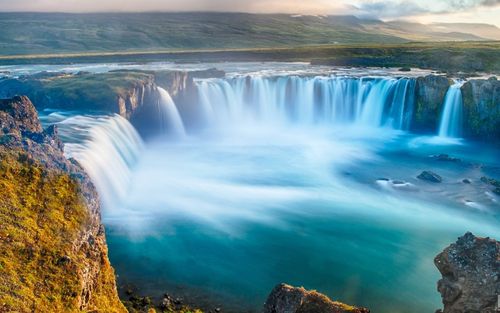The modern world is marked by a diversity of cultures that constantly interact with one another. This mix brings with it a host of opportunities and challenges. In order to effectively navigate this landscape, it is important to have an understanding of the global cultural landscape. In this blog post, we will define the concept of the global cultural landscape and explore its key features.
What is the Global Cultural Landscape?
The global cultural landscape refers to the cultural diversity of the world and how these cultures interact with one another. It is a complex and dynamic space where cultural practices, beliefs, values, and norms are constantly changing and influencing each other. The global cultural landscape is shaped by various factors such as globalization, migration, media, and technology.
Key Features of the Global Cultural Landscape
1. Diversity
The global cultural landscape is marked by a rich diversity of cultures. This diversity is reflected in the numerous languages, traditions, customs, and practices that exist across the world. The diversity brings with it a variety of perspectives and experiences that enrich our understanding of the world.
2. Interconnectedness
The global cultural landscape is interconnected. The interactions between cultures are facilitated by the increasing interconnectedness of the world through technology and trade. This interconnectedness has led to the exchange of ideas, products, and cultural practices.
3. Hybridization
The global cultural landscape is characterized by the hybridization of cultures. The interaction between cultures results in the creation of new cultural practices, beliefs, and traditions.
4. Conflict
The global cultural landscape is also marked by conflicts arising from cultural differences. These conflicts are often rooted in a lack of understanding and intolerance towards other cultures. It is important to acknowledge and address these conflicts in order to achieve a peaceful and harmonious world.
Examples of the Global Cultural Landscape
1. The spread of Western fast food chains such as McDonald’s and KFC to non-Western countries.
2. The increasing popularity of Korean pop culture in Asia and beyond.
3. The fusion of Mexican and American cuisines in the United States resulting in the creation of dishes such as the Tex-Mex burrito.
Conclusion
In conclusion, the global cultural landscape is a complex and dynamic space that has both benefits and challenges. Understanding its key features is essential in navigating this landscape. The world needs to embrace the diversity and interconnectedness of cultures, celebrate the hybridization of cultures, and address conflicts arising from cultural differences. With the right approach, the global cultural landscape can be an enriching and fulfilling experience for everyone.
(Note: Do you have knowledge or insights to share? Unlock new opportunities and expand your reach by joining our authors team. Click Registration to join us and share your expertise with our readers.)
Speech tips:
Please note that any statements involving politics will not be approved.
